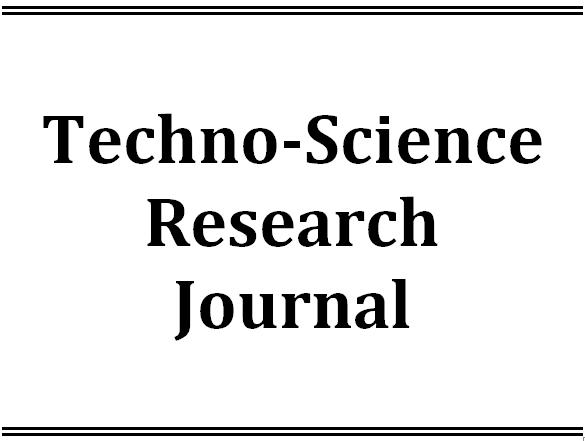Latest Issue
Empowering Education with Online Khmer Handwritten Text Recognition for Teaching and Learning Assistance
Published: August 30,2025Undergraduate Student Dropout Prediction with Class Balancing Techniques
Published: August 30,2025Status of Seawater Quality at Koh Rong Island, Sihanoukville, Cambodia
Published: August 30,2025Low-Complexity Detection of Primary Synchronization Signal for 5G New Radio Terrestrial Cellular System
Published: August 30,2025Word Spotting on Khmer Printed Documents
Published: August 30,2025Tuning Hyperparameters Learning Rate and Gamma in Gym Environment Inverted Pendulum
Published: August 30,2025Examining Passenger Loyalty in Phnom Penh Public Bus System: A Structural Equation Modelling Approach
Published: August 30,2025Prediction on Load model for future load profile of Electric Vehicle charging demand in Phnom Penh
Published: August 30,2025Economic Study on Integrating PV-DG with Grid-Tie: Case Study in Cambodia
Published: August 30,2025Characterization of Physicochemical Properties and Microbiological Quality of Khmer Rice Vermicelli (Num Banhchok) Collected in Phnom Penh Capital, Cambodia
-
1. Faculty of Chemical and Food Engineering, Institute of Technology of Cambodia, Russian Federation Blvd., P.O. Box 86, Phnom Penh, Cambodia
Received: September 15,2022 / Revised: / Accepted: November 27,2022 / Available online: June 30,2023
Khmer rice vermicelli “Num Banhchok” is lightly fermented Cambodian rice noodles. Num Banhchok is commonly served as a breakfast noodle dish with curry soup or Khmer fish soup in the country. Food safety concerning microbiological contamination over Khmer rice vermicelli has escalated since the manufacturers and retailers lack hygiene practices with the family-scale of production. Here, this study aimed to assess the physicochemical properties and microbiological quality of Khmer rice vermicelli sold in markets in Phnom Penh city. Thirty Khmer rice vermicelli samples were collected from 11 wet markets such as Tom Nop, 7- Makara, Orussey, Kandal, Depo, Samaki, Kilo 4, Central, Toul Songkae, Olympic, and Kilo-7 markets. The physicochemical analysis, including pH, titratable acidity, moisture content, water activity (aw), and color of L* values were carried out, while total plate count (TPC), total yeast and mold count (TYMC), lactic acid bacteria (LAB), Enterobacteriaceae, total coliforms (TC), Escherichia coli (E. coli), Staphylococcus aureus (S. aureus), and Bacillus cereus (B. cereus) were considered in microbiological analysis. The results showed that the values of pH, acidity, moisture content, water activity (aw), and color of L* values ranged from 3.78-4.35, 0.09- 0.19%, 68.07-76.07%, 0.9818-0.9883, and 64.16-73.94, individually. In terms of microbiological contamination, the samples were ranged with TPC (3.6-6.0 logs CFU/g), TYMC (3.3-5.5 logs CFU/g), LAB (2.9-4.9 logs CFU/g), Enterobacteriaceae (0.3-3.6 logs CFU/g), TC (0.4-3.6 logs CFU/g), E. coli (0.3-1.8 logs CFU/g), S. aureus (1.8-4.8 logs CFU/g), and B. cereus (1.9-4.8 logs CFU/g). The numerous microbial contaminants in Khmer rice vermicelli could be an indicator of the lack of sanitation by food handlers or producers, as well as poor environmental conditions in the production line and marketplaces affecting Khmer rice vermicelli quality.

